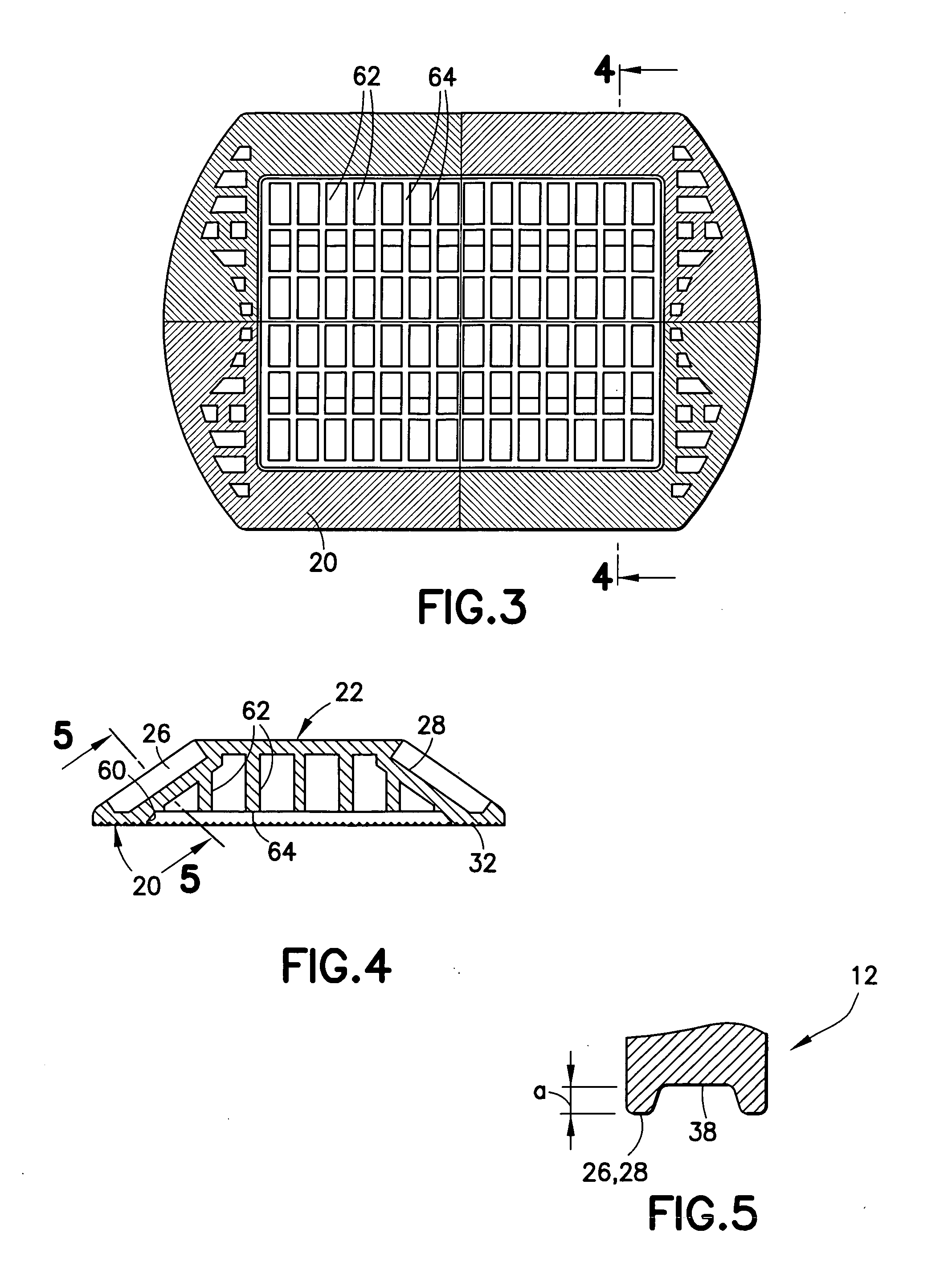Pavement marker with enhanced daytime signal
a daytime signal and enhancement technology, applied in signalling systems, roads, constructions, etc., can solve the problems of not being perceived by drivers and retroreflecting daytime light, and achieve the effect of reducing the strength of the nighttime signal produced by the front retroreflective panel, reducing the nighttime effectiveness, and increasing the density of energy directors
- Summary
- Abstract
- Description
- Claims
- Application Information
AI Technical Summary
Benefits of technology
Problems solved by technology
Method used
Image
Examples
Embodiment Construction
[0031] A pavement marker in accordance with the subject invention is identified generally by the numeral 10 in FIGS. 1-12. The pavement marker 10 includes a base 12, a bottom cover 14 and front and rear lenses 16 and 18. The base 12 is molded unitarily from an opaque fluorescent thermoplastic material and includes a bottom 20, as shown most clearly in FIG. 2 and an opposed top 22 as shown most clearly in FIG. 1. The top 22 is formed with front and rear lens recesses 26 and 28 for receiving the front and rear lenses 16 and 18 respectively. The lens recesses 26 and 28 are substantially identical. In many embodiments only a front lens 16 will be required, and hence the base will have no rear lens recess 28. Thus, for convenience only the front lens recess 26 is described in detail herein. More particularly, the front lens recess 26 defines a substantially wide rectangle with a bottom edge 30, a top edge 32 and opposite side edges 34 and 36. The front lens recess 26 is sloped relative t...
PUM
 Login to View More
Login to View More Abstract
Description
Claims
Application Information
 Login to View More
Login to View More - R&D
- Intellectual Property
- Life Sciences
- Materials
- Tech Scout
- Unparalleled Data Quality
- Higher Quality Content
- 60% Fewer Hallucinations
Browse by: Latest US Patents, China's latest patents, Technical Efficacy Thesaurus, Application Domain, Technology Topic, Popular Technical Reports.
© 2025 PatSnap. All rights reserved.Legal|Privacy policy|Modern Slavery Act Transparency Statement|Sitemap|About US| Contact US: help@patsnap.com



